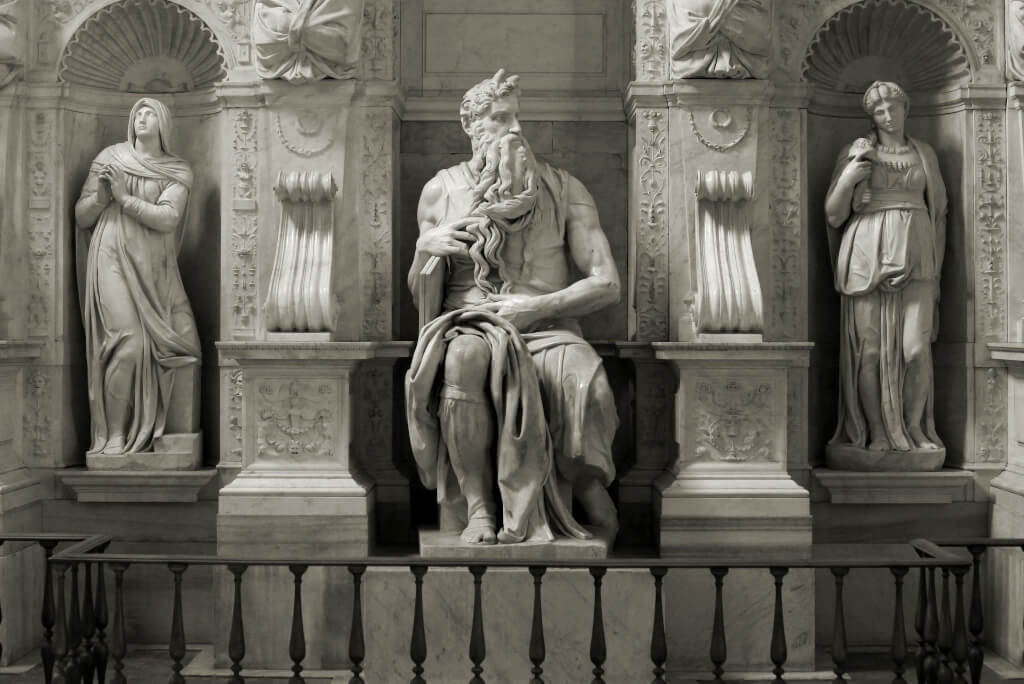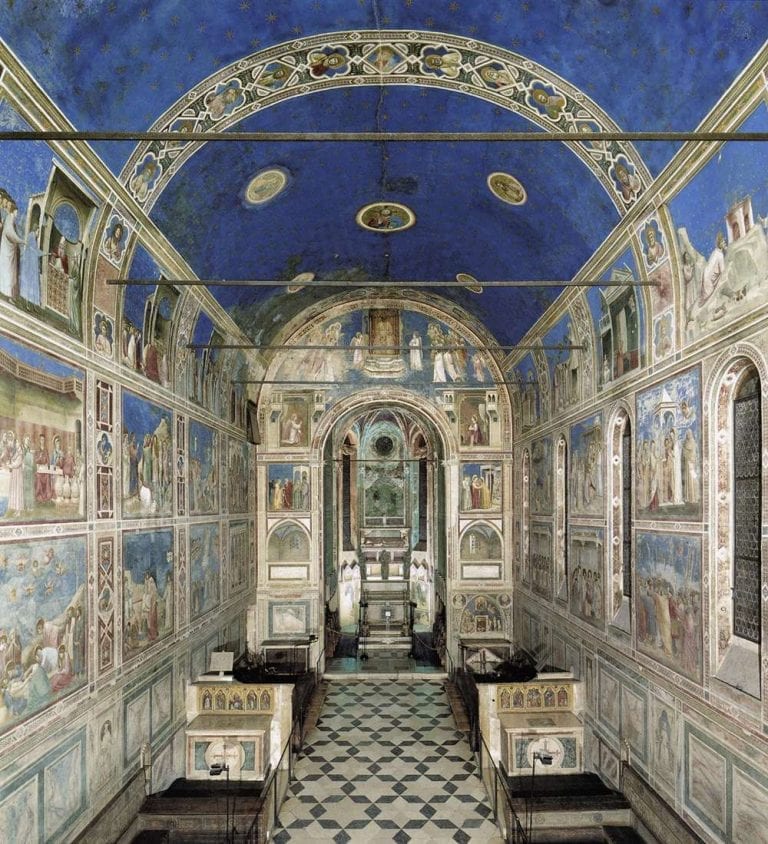
Michelangelo’s Works: 7 Exquisite Paintings
May 21, 2025
When we think of Michelangelo’s works, the awe-inspiring frescoes of the Sistine Chapel and the iconic statue of David immediately come to mind. These masterpieces are undoubtedly among the greatest achievements in art history. Yet, Michelangelo’s nearly 89-year career produced countless other extraordinary works spanning painting, sculpture, and architecture.
Let’s delve into some of Michelangelo’s works that may not be as famous but are equally impressive.
Michelangelo di Lodovico Buonarroti Simoni, commonly known simply as Michelangelo, was born on March 6, 1475, in Caprese, Tuscany. Raised by a stonecutter, his connection to marble began in childhood. By age 13, he apprenticed under Renaissance master Domenico Ghirlandaio, where he mastered fresco painting—a skill that would later define some of his most famous works.
He soon caught the attention of Lorenzo de Medici, also known as Lorenzo the Magnificent, who introduced him to the leading artists and intellectuals of the day. This exposure deeply influenced Michelangelo’s works.
Table of Contents
ToggleMichelangelo’s Pietà
When Michelangelo was barely 20 and still relatively little known, the French ambassador in Rome, Cardinal Jean de Bilhères hired Michelangelo to sculpt a statue for a chapel in old Saint Peter’s Basilica. This sculpture would become the Pietà, one of the best-known and most-loved of Michelangelo’s works.

The Pieta in St. Peter’s Basilica is one of the best-known of Michelangelo’s works
The Cardinal died before the sculpture was finished and when Michelangelo finished the piece, he was unsure what to do with it. As the story goes, he and a friend snuck it into the basilica during the night. Carved from a single block of marble, the Pietà shows Mary holding her son after his crucifixion. Several things make this sculpture striking:
First of all, Michelangelo depicted Mary as young, around the same age as Jesus. Michelangelo’s choice to show her much younger was deliberate – she is chaste and has retained her youth.
Second, most pietàs up to then showed a gruesome, bloodied version of the dead Christ, and a weeping Mary almost disfigured in her grief. In Michelangelo’s Pietà, the Virgin is serene and her son appears almost asleep. This was a radical departure from convention.
The Pietà is the only sculpture Michelangelo ever signed. It was the only sculpture he needed to sign.
The best way to see the Pietà is by taking part in the St. Peter’s Basilica Tour with Dome & Crypts tour.
The Doni Tondo
At this point, Michelangelo saw himself as a sculptor and only as a sculptor. But wealthy patrons wanted the young artist for other types of work as well. In 1505, Michelangelo was commissioned to paint the Holy Family for the wealthy Florentine merchant, Agnolo Doni.
Today known as the Doni Tondo (on show at the Uffizi gallery) because of its circular shape, the painting shows the Holy Family as if they had been sculpted. Another unusual thing about the Doni Tondo, one of the most remarkable of Michelangelo’s works in painting, is the group of nude bathers in the background, a seemingly strange juxtaposition to the Holy Family.

Michelangelo’s Doni Tondo at the Uffizi Gallery in Florence. Image source: Wikimedia Commons
Right as Michelangelo was working on this painting, in 1506, many sculptures from antiquity were being unearthed in Rome. Two of these sculptures in particular had a profound effect on Michelangelo and would influence his art. These were the Apollo of the Belvedere and the Laocoön. And in this painting of the Holy Family, the nudes show that Michelangelo paintings had already begun to be inspired by those ancient Roman structures.
By this time, Michelangelo had become quite well-known. And this is right when a new Pope was elected in Rome – Pope Julius II (della Rovere.)
Tomb of Pope Julius II
Pope Julius II was a decisive man – his nickname was “The Warrior Pope”. Indeed, he was the last pope to fight in battle.
Julius had a lot of ideas about things that needed to be done at the Vatican, including a whole new design for the basilica, which was falling apart, a gradiose tomb for himself, and paintings for many rooms in the papal palace, including the ceiling of the Sistine Chapel.
Julius knew just the sculptor for his tomb. He wanted Michelangelo to create something so huge, it would not have fit into Old Saint Peter’s basilica. So the basilica itself would also need to be remade.

Reconstructed plan of Michelangelo’s design for Pope Julius II’s tomb. Erwin Panovsky, 1937
While Michelangelo was working on the supersized plans for Julius’ tomb, the Pope interrupted and asked him to paint the ceiling of the Sistine Chapel (which had been named for Julius’ uncle, Pope Sixtus IV, and whose walls had already been beautifully frescoed by the great Florentine artists of the 1400s.)
Michelangelo refused. He said he was a sculptor, not a painter. Pope Julius II disagreed. We know who won that argument.
Michelangelo famously never finished Julius’ tomb. In fact, it was finished in 1545 long after the Pope himself died. Though the tomb was never completed as intended, Michelangelo’s statue of Moses and his sculptures of the Dying Slave and Rebellious Slave are iconic elements of Michelangelo’s works.
Sculptures of Moses & The Dying and Rebellious Slaves
Once Michelangelo finished painting the ceiling of the Sistine Chapel in 1512, he felt the need to at least complete one of the sculptures of Julius’ incomplete tomb. His statue of Moses, meant for Julius’ tomb, is today in the church of Saint Peter in Chains in Rome. It’s said that the artist felt this was his most life-like sculpture. Michelangelo completed two other sculptures for the project: the Dying and Rebellious Slaves, both now in the Louvre, Paris.
The Slaves at the Accademia in Florence
When Michelangelo sculpted, he said he was merely doing God’s work – freeing the already existing sculpture from inside the marble. There is no better place to view exactly what he meant by this than in the Accademia in Florence. Most visitors flock to this museum to see Michelangelo’s monumental sculpture of David, and with good reason.
But take note of his other works there, as well.
There you can see four unfinished sculptures, “The Awakening Slave”, “The Young Slave”, “The Bearded Slave” and “The Atlas”. All four of them show Michelangelo’s technique of “freeing” the statue from the marble. Some art historians believe Michelangelo may have intended to leave these works in this state, to show the struggle of humans to free themselves from their material things.
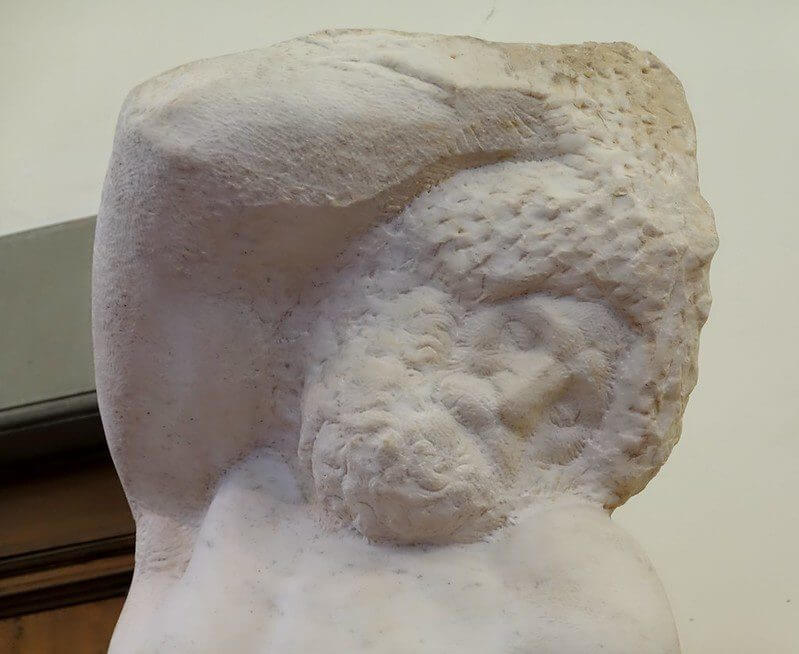
Michelangelo’s Bearded Slave in the Accademia. Image Source: Flickr
Piazza del Campidoglio
In Michelangelo’s long and productive life, he proved so talented that in his relatively old age, he was tapped as an architect for several important works in Rome. In 1536, 25 years after Michelangelo finished his work on the ceiling of the Sistine Chapel, he began his work on The Last Judgement on the altar wall of the chapel. Pope Clement VII (Medici) initially commissioned the artist but it was completed under Pope Paul III (Farnese.) Pope Paul III reigned for 15 years and in that time, he had a productive and harmonious rapport with the great artist.
Pope Paul III also had Michelangelo redesign the Piazza of the Campidoglio, Rome’s City Hall. Michelangelo would not see this project finished, but you can see a model of his design for this stunning piazza when you visit the Capitoline Museums.
In fact, it was not until 1940 that Michelangelo’s designs for the gorgeous pavement would be realized.
Although Michelangelo didn’t live to see its completion, his vision transformed the space into one of the most harmonious of Michelangelo’s works in architecture.
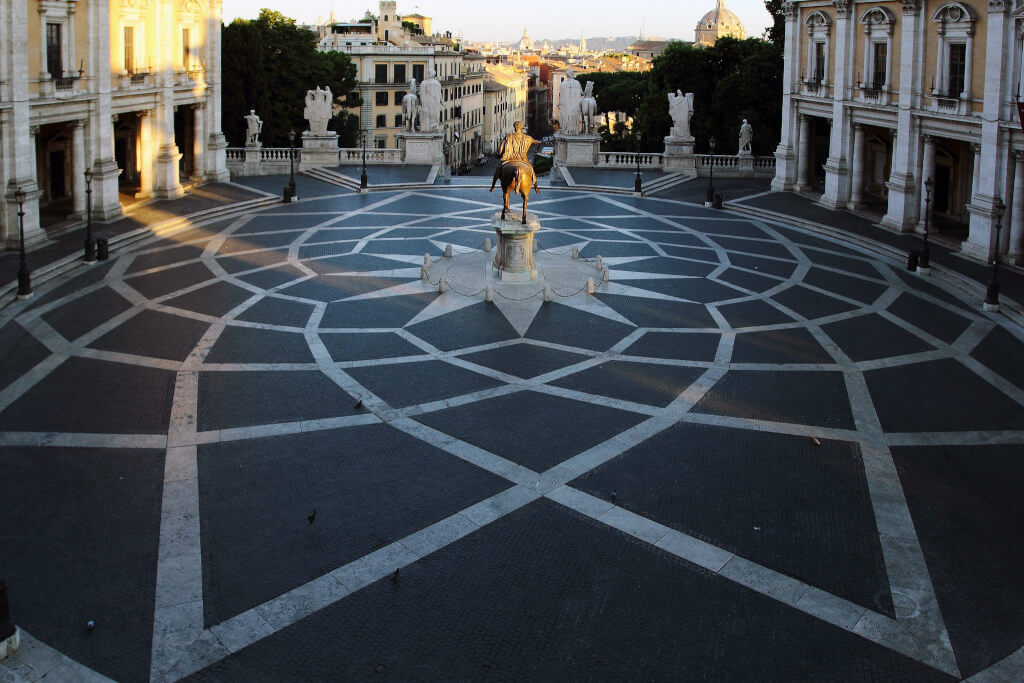
Piazza Del Capidoglio in Rome, designed by Michelangelo. Image Source: Flikr
St. Peter’s Basilica
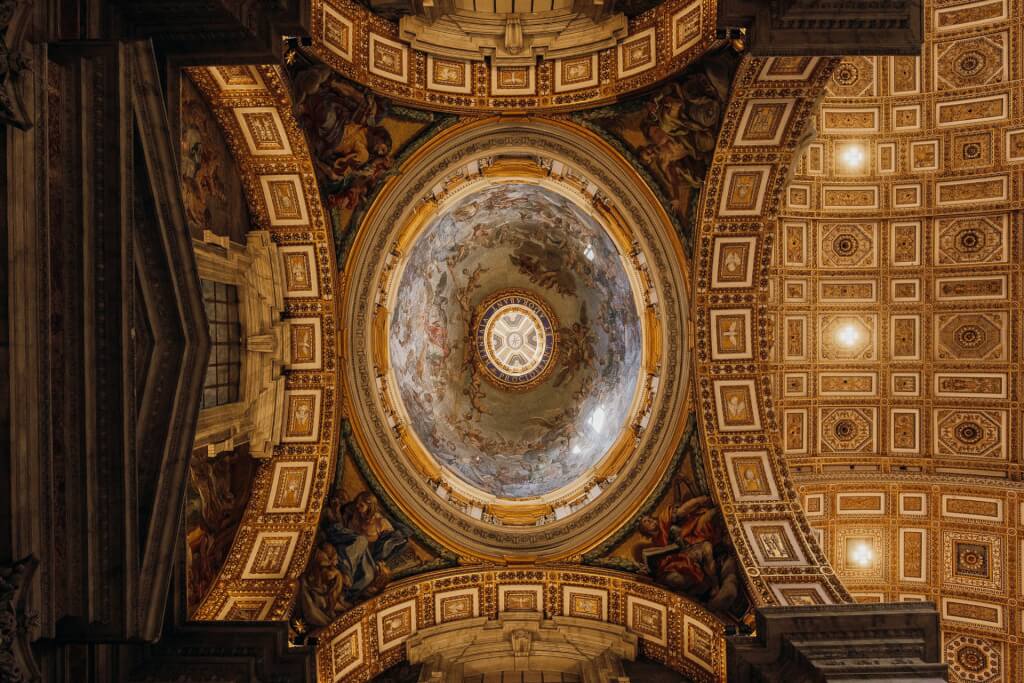
Finally, after many fits and starts and projects begun by so many other great artists and architects of the Renaissance, including Bramante, Raphael, and Sangallo, Pope Paul III appointed Michelangelo as chief architect of Saint Peter’s Basilica and it is his design we enjoy today.
While Michelangelo was not the last architect to work on this Papal basilica, his harmonious design and his majestic dome are two of the most evident and most enduring reminders of this great artist’s legacy. It it without a doubt, the crowning architectural achievement of Michelangelo’s works.
Experiencing Michelangelo’s works today
To really appreciate the magnificence and beauty of Michelangelo’s works, we recommend taking a tour with one of Walks of Italy’s expert guides. In Rome you can see the Sistine Chapel with no one around, and climb St.Peter’s Basilica to inspect the dome close up. Visit David at the Accademia in Florence, and tour the Uffizi with an expert.
Michelangelo’s works go beyond what is most famous. Each creation reflects his unparalleled talent and his deep understanding of art’s ability to inspire. A guided tour is the best way to immerse yourself in the legacy of Michelangelo’s works and their enduring impact on the world.
Author’s Bio: Elyssa Bernard is the owner and publisher of Romewise, a website all about visiting Rome. Originally from Gainesville Florida, Elyssa married a Roman, and has lived in Rome for 20 years.
Book a Tour

Pristine Sistine - The Chapel at its Best
€89
1794 reviews

Rome in a Day - Package Tour
€99
0 reviews

Crypts, Bones Catacombs: Underground Tour of Rome
€69
401 reviews

Vatican Highlights Tour: Vatican Museums Sistine Chapel
€59
422 reviews

Best of Florence Walking Tour with David the Duomo
€59
536 reviews









